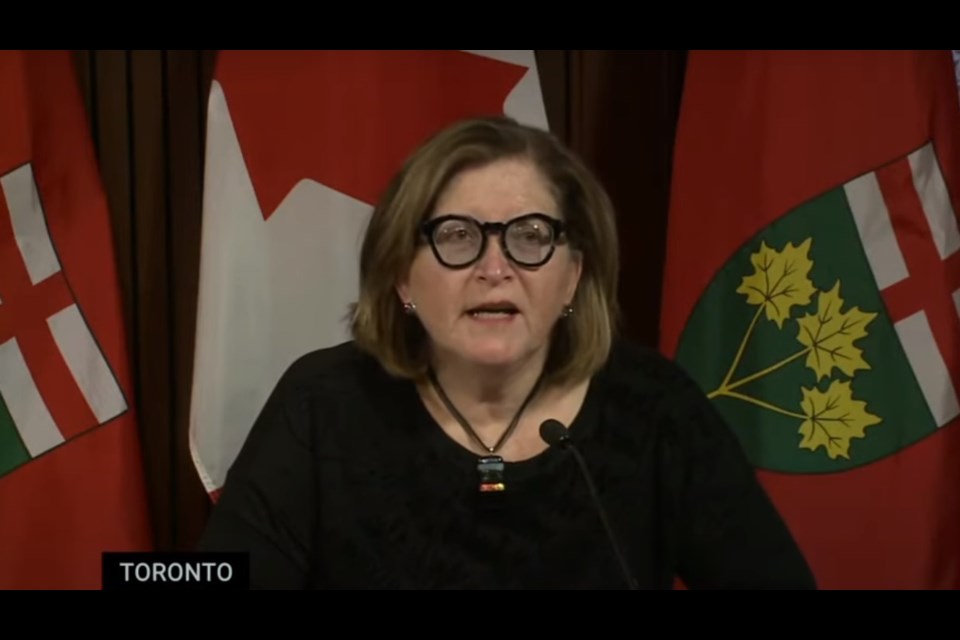Public Health officials in Toronto have presented new computer modelling that says unless some tough, new restrictive measures are put in place in Ontario the case count and death rate for COVID-19 is just going to get much worse.
The details of the new study were presented Monday morning by Dr. Barbara Yaffe, Ontario's chief associate medical officer of health, and Dr. Adalsteinn Brown, the dean of the Dalla Lana School of Public Health at the University of Toronto.
"So the key findings are very clear," said Brown. "Today the cases continue to grow.”
Brown said even though there had been talk about Ontario being in a precarious situation with consistent low-level case growth in the past two months, things have changed for the worse.
"Overall case levels in the province now are more than twice of what we called the red level. And the percentage of positivity, although flattened right now, has increased substantially since two months ago," said Brown.
He said Ontario's ability to control case growth is precarious
"It is important to note that the continuing case growth will increase the number of outbreaks we see in long-term care homes and other settings where people live together that are quite vulnerable to the spread and impact of the disease," Brown continued.
To reinforce the sense of urgency, Brown said the current trend will drive up the demand for ICU (Intensive Care Unit) beds to more than 300 within 10 days. As of Monday morning, the number of ICU beds being used in Ontario was 265.
Brown said unless something is done that demand for ICU beds will be up to 1,500 by mid-January.
Hard lockdowns:
Brown said the science team assigned to study the COVID-19 trends in Ontario looked carefully at the situations that developed in Australia and France to determine the impact of the "hard lockdowns" that were imposed in those countries for periods of several weeks.
"These sorts of hard lockdowns can reduce case numbers in Ontario we believe to less than a thousand per day if they're of sufficient duration and if they're matched with increased testing and with increased support," said Brown. In the past seven days in Ontario, the COVID case count has been more than 2,100 each day.
"With lower case numbers we will be able to maintain safe Intensive Care Unit care for COVID-19 patients and other patients."
Brown said more testing is needed and that means additional support needs to be provided to people who test positive and need to be quarantined for 14 days, meaning many of them would not be able to get to work.
Brown also stated that even by conservative estimates of minimal growth the COVID-19 case count and death count in Ontario is going to be much worse.
"If we continue on at about one to two to three per cent growth, we are going to be between about 3,000 and 5,000 cases (per day) by the fourth week in January."
Brown added that as the spread of the disease increases in the community, there will be a corresponding spread of COVID-19 in any nearby long-term care homes.
"So the biggest predictor of an outbreak in a long-term care home is the spread of the disease in the community around the long-term care home, said Brown.
"It leads to a significant impact in terms of further cases, hospitalizations and death," he added.
Brown touched on the mortality rate in Ontario mentioning that last week there were 100 deaths, and 102 deaths in the week previous to that.
"Overall, mortality continues to increase," said Brown. "When we last talked about mortality we felt it would be between 25 and 30 a day. But it is tracking higher and higher," said Brown. He said if the current trend continues, Ontario will be reporting 50 deaths a day by mid-February.
Len Gillis is a Local Journalism Initiative reporter at Sudbury.com, covering health care in Northern Ontario. The Local Journalism Initiative is funded by the federal government.
